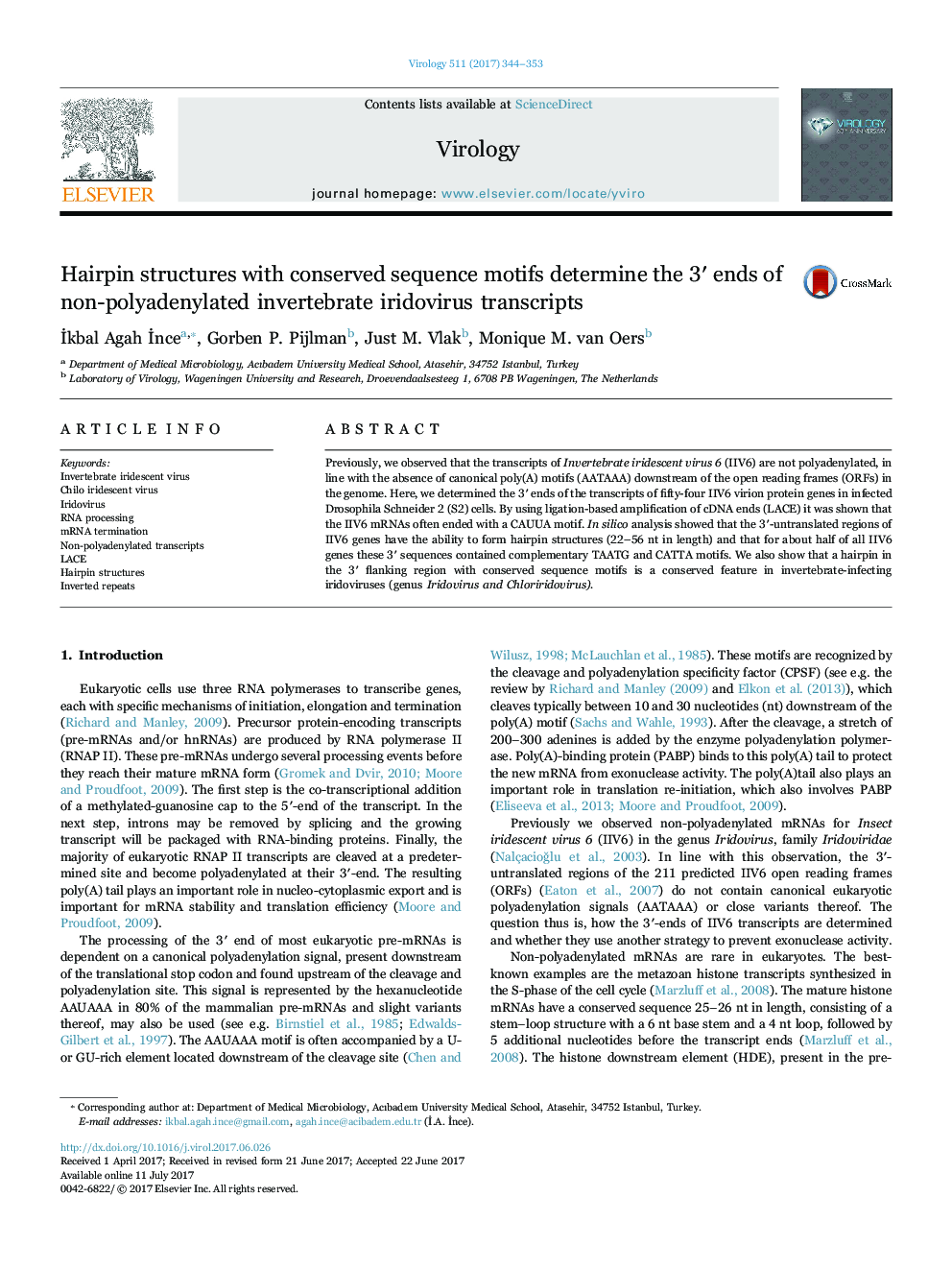| کد مقاله | کد نشریه | سال انتشار | مقاله انگلیسی | نسخه تمام متن |
|---|---|---|---|---|
| 5674883 | 1594206 | 2017 | 10 صفحه PDF | دانلود رایگان |

- Hairpin-based mRNA 3â²end formation appears common in invertebrate iridoviruses.
- Specific complementary motifs triggering 3â² end formation were predicted in silico.
- Half of the IIV-6 transcripts ended with a CAUUA motif, preceded by UAAUG.
- Conservation of xrn1 genes among IIVs hints towards cleavage of pre-mRNAs.
- Vertebrate iridoviruses rely on another mechanism for mRNA maturation than IIVs.
Previously, we observed that the transcripts of Invertebrate iridescent virus 6 (IIV6) are not polyadenylated, in line with the absence of canonical poly(A) motifs (AATAAA) downstream of the open reading frames (ORFs) in the genome. Here, we determined the 3â² ends of the transcripts of fifty-four IIV6 virion protein genes in infected Drosophila Schneider 2 (S2) cells. By using ligation-based amplification of cDNA ends (LACE) it was shown that the IIV6 mRNAs often ended with a CAUUA motif. In silico analysis showed that the 3â²-untranslated regions of IIV6 genes have the ability to form hairpin structures (22-56 nt in length) and that for about half of all IIV6 genes these 3â² sequences contained complementary TAATG and CATTA motifs. We also show that a hairpin in the 3â² flanking region with conserved sequence motifs is a conserved feature in invertebrate-infecting iridoviruses (genus Iridovirus and Chloriridovirus).
89
Journal: Virology - Volume 511, November 2017, Pages 344-353